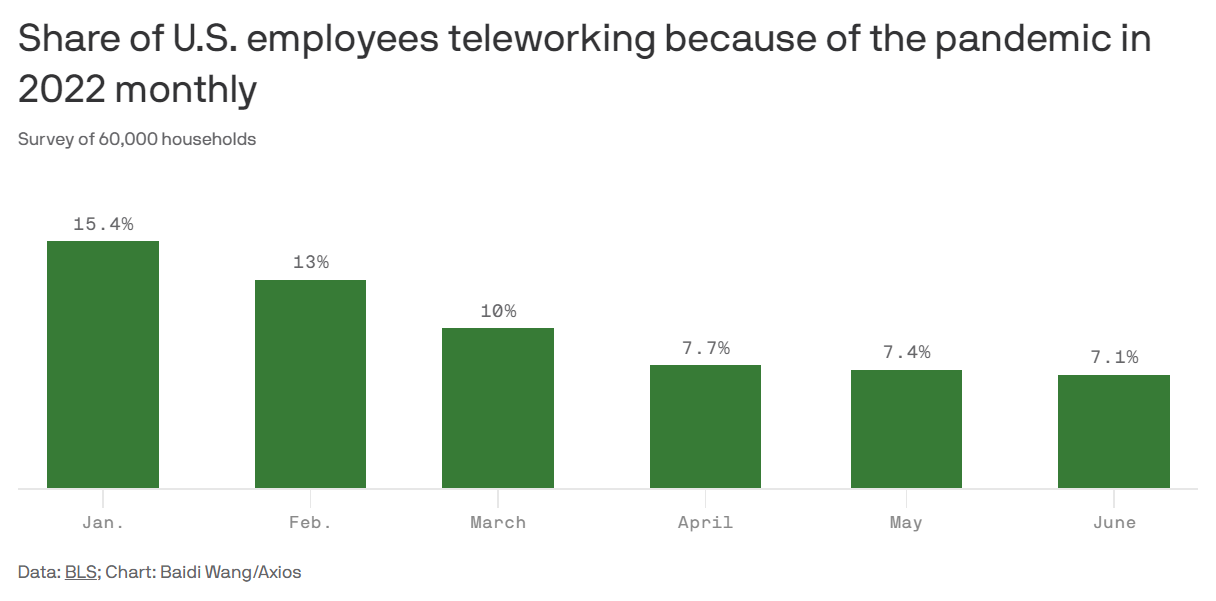The percentage of U.S. employees working remotely because of COVID-19 has dropped by more than 50% from the beginning of the year, leveling off at around 7%. Based on a survey from the U.S. Bureau of Labor Statistics, the data refers “to employed persons who teleworked or worked at home for pay at some point in the 4 weeks preceding the survey specifically because of the pandemic.” The percentage of workers dropped rapidly at the beginning of the year, decreasing from 15.4% in January to 7.7% in April. The figure seems to have stabilized around a 7% floor in recent months.

It is important to note that these numbers are highly dependent on the current state of the pandemic, and one could reasonably expect a reversal in the trend if new variants, such as BA5, create new waves of infections. Remote work rates also vary significantly by industry. A whopping 20% of “information” workers, 19.7% of those in finance/insurance, and 17.6% of those in “professional and technical services” worked from home last month. When compared to less remote work-friendly professions, such as construction (2.2%), transportation (2.7%), and warehousing (3.6%), the difference is stark.
Since the figures are specifically related to those individuals working remotely because of the pandemic, they do not include employees working remotely prior to the pandemic. Also, the numbers exclude workers who started working remotely during the pandemic but may no longer consider COVID-19 the primary factor keeping them home every day. According to a WFH Research report, 15% of employees were fully remote and 30% were in hybrid arrangements in June 2022. These figures reflect all employees between the ages of 20 and 64 who earned at least $10,000 in the previous year.
Despite the rhetoric that remote work is the future of employment, it is hard to ignore that the percentage of employees in fully remote arrangements comprises less than one in five people. Even when you include hybrid arrangements, the percentage does not account for the majority of workers. Another way to think about the prevalence of remote work is by the number of remote days. According to WFH Research, approximately 30% of days worked in June 2022 were remote. If you try to carve out the population in roles that cannot support remote work (just include respondents who were able to work from home during the pandemic), the percentage is slightly less than 50% and down from January.
There is no question that COVID-19 accelerated the remote work trend. What remains to be determined is whether or not the future of work will be primarily remote. Current signs suggest no. If anything, the future may be hybrid work arrangements, which would mean that the concept of working from anywhere in the world may not be a reality for most employees. Employers should make the decision on their work policies based on what is best for the company’s success, paying special attention to the wants and needs of their employees. Certain companies will be able to maintain their competitive advantage while supporting full or partial remote work, but for those who cannot and feel the external pressure to embrace remote work, it will be important to be mindful that most companies and work days are not remote (at least not yet). It may be easy to seem like fully on-site or hybrid work arrangements are no longer the norm, but that is not the case.












